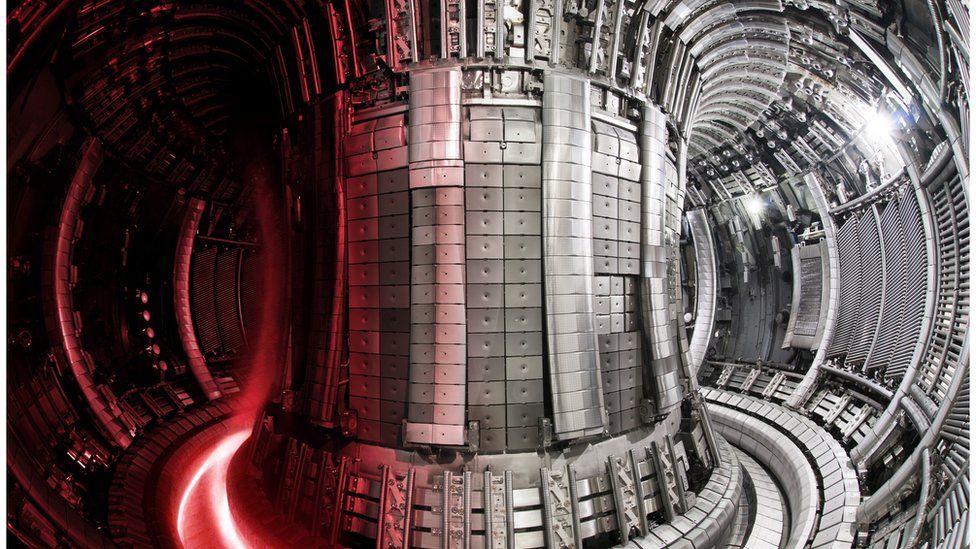
Introduction
In a previous post about the Fukushima nuclear disaster, I talked about nuclear fission, and in particular, its potentially catastrophic consequences. In this post, I will also be talking about nuclear energy; but instead of discussing its past, I will focus on its future: nuclear fusion.
What is Nuclear Fusion?
As discussed in the previous post, nuclear fission involves sending high speed particles (typically neutrons) at semi-unstable isotopes of large atoms (typically uranium). This reaction creates smaller isotopes, a few neutrons, and a large amount of energy. This energy is then used to heat water, which can then by used to generate electricity. This process is shown in the diagram below by Duke:

Nuclear fusion, on the other hand, takes in two smaller particles at extremely high pressure and temperature, and releases a larger particle, a neutron, and (once again) energy. We experience the effects of nuclear fusion every single day- this is the reaction that generates the suns’ heat. The process is shown below:

There are a couple of key differences between these two processes. First, nuclear fusion is significantly more difficult to accomplish. Even inside the sun, which exerts extreme gravitational pressure, it takes 10 million degrees Celsius for fusion to occur. On Earth, the same reaction would require at least 100 million degrees Celsius- a temperature that nothing can come into direct contact with. Another big difference between fusion and fission is that the products of fusion (mainly the noble gas helium) are significantly safer than fission- in fact, they are almost harmless. As I have established earlier in my blog, dealing with nuclear waste is a massive undertaking.
ITER
Based on the information above, it is clear that there would be many advantages of developing nuclear fusion; clean energy with no downsides forever. Currently, there is a massive fusion reactor laboratory being built in the south of France called the International Thermonuclear Experimental Reactor (ITER). Supported by over 35 nations across the world (including the US, Japan, India, and South Korea), this laboratory aims to make nuclear fission both efficient and implementable on a large scale. Recently, a massive breakthrough was achieved supporting the science behind the reactor.
The JET laboratory in the UK broke its record for the most amount of energy produced from fusing two hydrogen atoms, doubling the previous record. Although it requires two 500 megawatt generators to run, it only produces 11 megawatts of power. While this technology is still in its infancy, it holds great promise.
